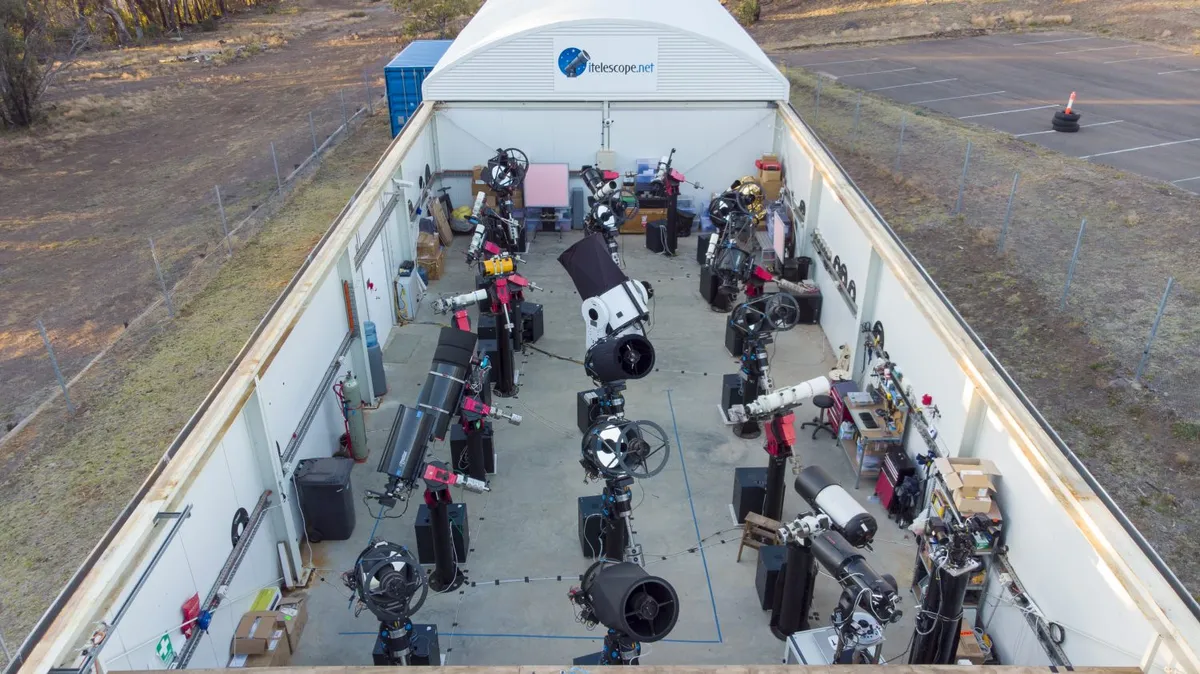Amateur astronomy has had me hooked since 1967. When I moved to rural Shropshire in 1989 I was living an amateur astronomer’s dream – a totally dark location, and great easterly, southerly and westerly horizons with no obstructions.
Over the years the dream has faded. First, security lights began to appear on properties nearby, then structures were built that obstructed our view of the night sky, until even solar observing from the garden became impossible.
Then my declining ability to move equipment from the house into the garden, caused by a back injury, became more of a factor and hindered my love of visual and photographic astronomy.
But my life changed for the better after a chance conversation with a colleague at an astronomy event introduced me to the world of remote astronomy.
This was just what I needed: companies whose telescopes could be controlled over the internet, with observatories in both the Northern and Southern Hemispheres.
No more would I have to suffer the stiffness of movement the day after, or the cold winter nights, or the expense of equipment I could not afford.
I now had at my fingertips remote observatories with research-grade kit fitted with high-end CCD cameras; telescopes that are automatically focused and guided by default; and a high-quality data pipeline that had dark, flat and calibration frames applied during observing runs.
I realised quickly that the extra beauty of doing astronomy with remote telescopes was that you could image objects unseen in the UK night sky.

Constellations such as Carina, the Keel, only reveal their treasures to Southern Hemisphere eyes, and never rise above the horizon at my location in Shropshire.
There’s an added bonus too, in that you can schedule your imaging runs to take place when you’re unable to do the observation live.
I took to this way of working and had many images published, plus the opportunity to carry out remote imaging as part of my job.
I wrote a lecture about it and delivered it across the UK and Ireland. But I was unprepared for the response.
I found a fair bit of opposition: I was accused of undermining astronomy, of not doing it properly, even of promoting its demise.
This response has always struck me as strange. After all, the astronomy you do, be it reading books, visual observing, local-based imaging, scientific research or remote telescope usage, is your astronomy – your choice.
And there’s another point to consider here too: remote astronomy is how the professionals have operated for years.
By saying that amateur astronomers who image remotely aren’t doing real astronomy, does that also mean professional astronomers working in similar ways aren’t taking their branch of science seriously either?
It’s heartening to see that views about this branch of astronomy are changing, and as a result the true value of remote astronomy is being realised, whether that’s through educational services like the Faulkes Telescope or the Liverpool Telescope, or paid-for services such as iTelescope or Slooh.
Pete Williamson is a professional astronomer and teacher of remote astronomy. He is an imaging consultant for the Faulkes Telescope Project. This article originally appeared in the February 2020 issue of BBC Sky at Night Magazine.